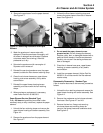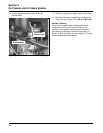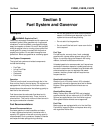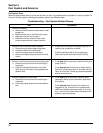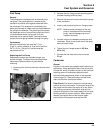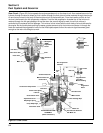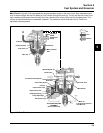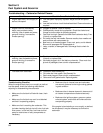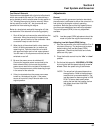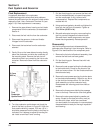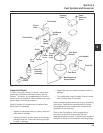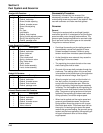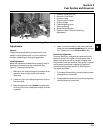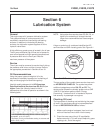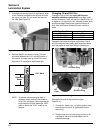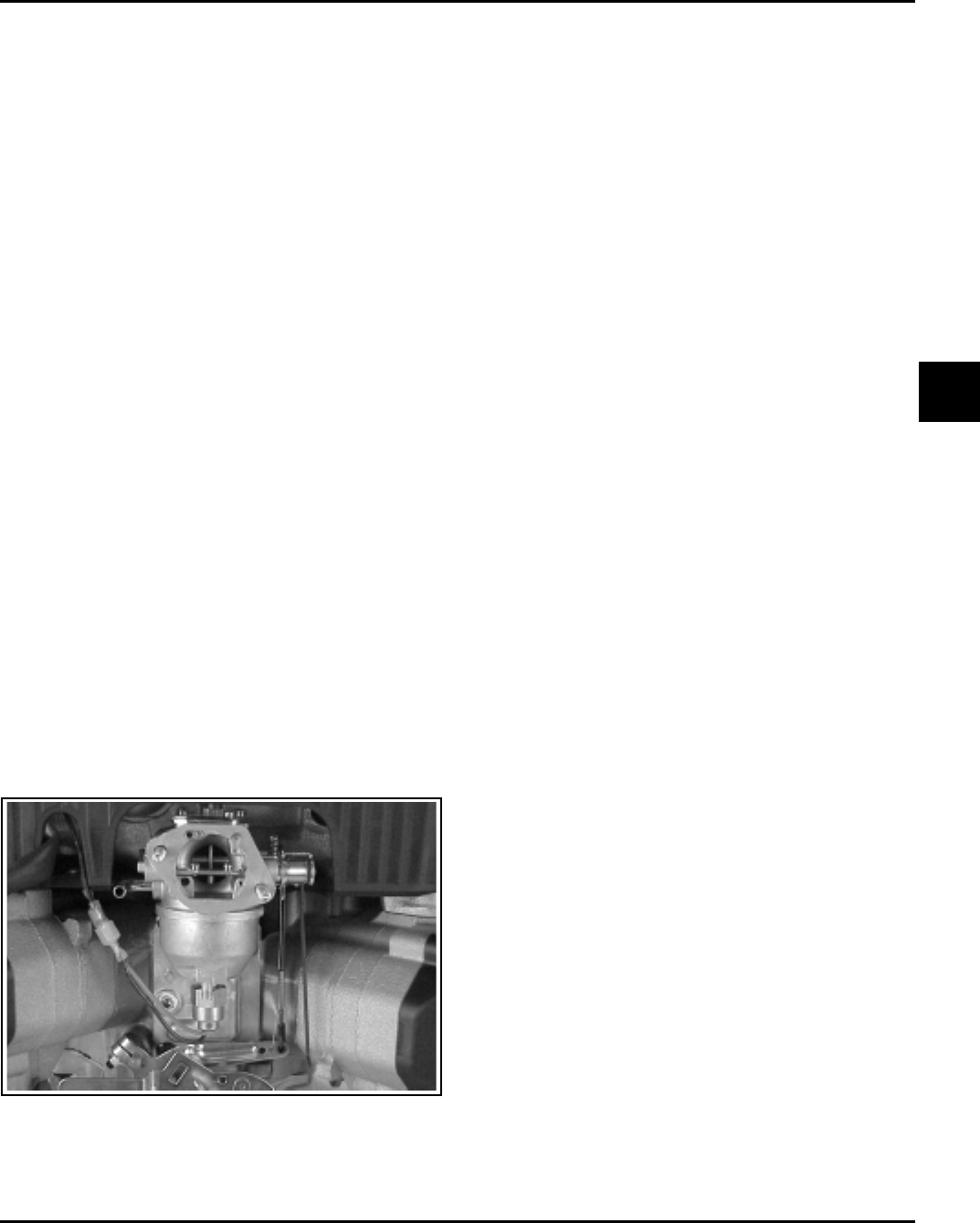
5.7
Section 5
Fuel System and Governor
5
Fuel Shut-off Solenoid
Carburetors are equipped with a fuel shut-off solenoid,
which also contains the main jet. The solenoid has a
spring loaded pin which retracts when the key switch is
‘‘on’’, allowing the engine to function normally. When
the key switch is turned ‘‘off’’, the pin extends and
prevents fuel from entering the engine.
Below is a simple test made with the engine off, that
can determine if the solenoid is functioning properly:
1. Shut off the fuel and remove the solenoid from the
carburetor. When the solenoid is loosened and
removed, gas will leak out of the carburetor. Have
a container ready to catch the fuel.
2. Wipe the tip of the solenoid with a shop towel or
blow it off with compressed air, to remove any
remaining fuel. Take the solenoid to a location
with good ventilation and no fuel vapors present.
You will need a 12 volt power source that can be
switched on and off.
3. Be sure the power source is switched off.
Connect the negative power source lead to the
black solenoid lead, and connect the positive
power source lead to the red lead of the solenoid.
Turn on the power source, while observing the pin
in the center of the solenoid.
4. If the pin retracted when the power source was
turned on, the solenoid is good. If the power
source is turned off, the pin should return to its
original position.
Adjustments
General
In compliance with government emission standards,
the carburetor is calibrated to deliver the correct air-to-
fuel mixture to the engine under all operating
conditions. Both the low and the high speed mixture
circuits are pre-established and cannot be adjusted.
The low idle speed (RPM) is the only adjustment
available.
NOTE: Low idle speed (RPM) adjustment should be
made only after the engine has warmed up.
Adjusting Low Idle Speed (RPM) Setting
1. Start the engine and run at half throttle for 5 to 10
minutes to warm up. The engine must be warm
before making final low idle speed (RPM)
adjustment. Check that the throttle and choke
plates can fully open.
2. Place the throttle control into the ‘‘idle’’ or ‘‘slow’’
position.
3. Set the low idle speed to 1200 RPM* (±75 RPM)
by turning the low idle speed adjusting screw in
or out. Check the speed using a tachometer.
*NOTE: The actual low idle speed depends on
the application. Refer to the equipment
manufacturer’s recommendations. The
low idle speed for basic engines is 1200
RPM. To ensure best results when
setting the low idle fuel needle, the low
idle speed should be 1200 RPM
(± 75 RPM).
Figure 5-4. Carburetor and Solenoid.



